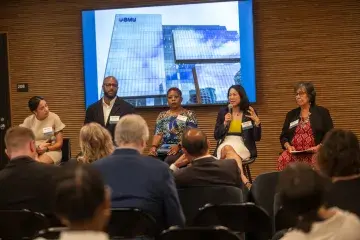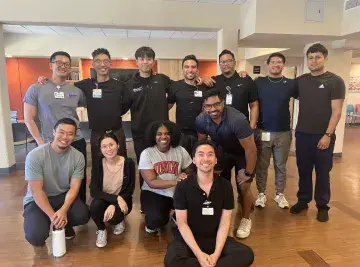From the Classroom to the Clinic: Physical Therapy Students Offer Pro Bono Care to the Elderly
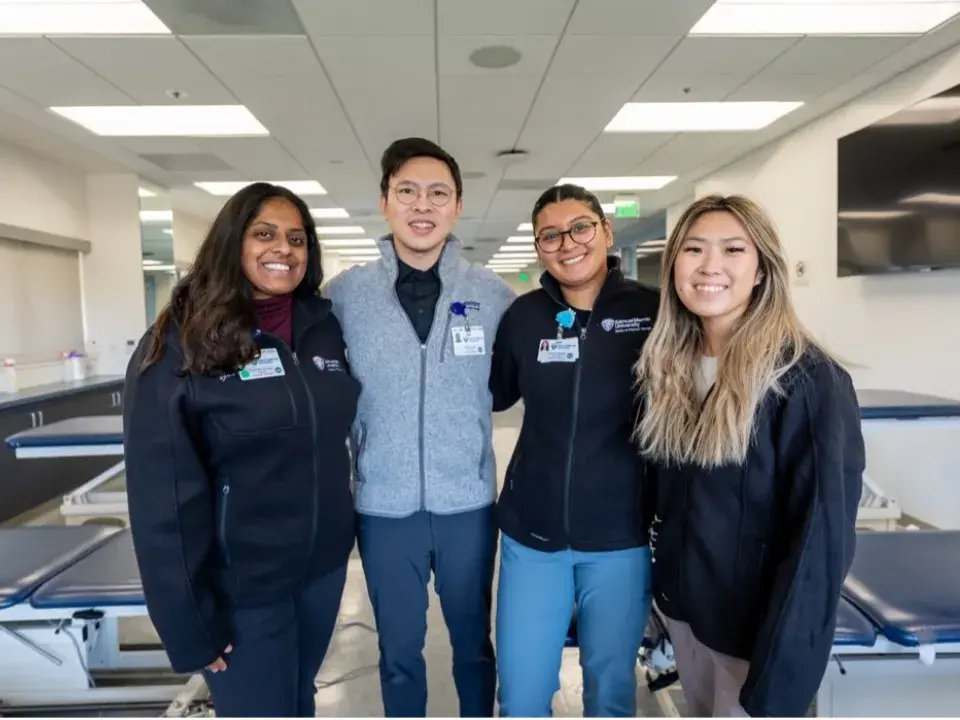
Physical therapy student Rashika Sunku, DPT ’25, took photos of herself doing therapeutic exercises while seated on a bench so that her participant knew exactly how to replicate them on his own. A power wheelchair user in his 80s, he often worked out in the courtyard near his home, at the LifeLong Over 60 Health Center in Berkeley, where Sunku and 16 other first-year physical therapy students provided pro bono physical therapy services for low-income, elderly people.
“I really felt like we were treating the participant, not the diagnosis,” Sunku tells me over the phone during her lunch break. “There’s a difference between what you get on a form versus when the person is sitting right there in front of you.” She appreciated having this kind of intimate, hands-on approach, something that drew her to SMU’s PT program to begin with.
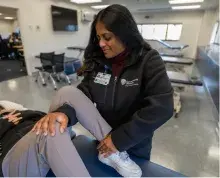
Facilitated by Dr. Jose Reyna, assistant professor of Physical Therapy, the evolution of the pro bono program is a new and hopefully permanent fixture that benefits everyone involved. Geriatric populations dealing with chronic pain, osteoarthritis, and mobility issues receive free healthcare from eager practitioners-in-training who get to take the classroom into the clinic in their very first year of the program. In addition to LifeLong, students also worked with participants at Satellite Affordable Housing Associates (SAHA) in Oakland.
“Participants may have limited transportation and money, so it was a responsibility on our part to bring the clinic to them,” explains Dr. Reyna, citing parking at the SMU campus as but one factor that could prevent some from accessing care.
Working in pairs, the students spent three weeks doing clinical work with one participant and then another three weeks observing their progress via Zoom as a second pair of students took over the clinical side. The mobile clinic spanned from May to August of 2023. “They expressed lots of interest, giving over their lunch breaks to drive out to these sites and volunteer their time,” says Dr. Reyna.
“I liked being able to go into their community to get a better sense of what needs to happen for them to live the best life they can,” says student Jason Lau, DPT ‘25. He tells me about his participant, also a resident at LifeLong, whose chronic lower back pain resulted in using a power wheelchair as his primary means of mobility, which had broken down. So, while he could see the bus stop or the convenience store (one of the places he socialized) just across the courtyard, he was no longer able to get to those places.
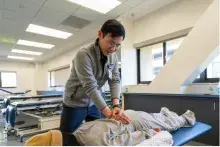
“These psychosocial factors really put wear and stress on the mind,” says Lau, who researched free resources and alternate transportation options. “From an educational perspective, it really allowed me to flex that creative side of my treatment plan for the participant, by working within the confines of their lives.”
For student Karina Rubio, DPT ’25, that creativity came when she was able to peek into the living space of her participant, an individual in his 90s with neck pain and a great attitude, in order to better personalize their protocol and prescribe exercises that were appropriate to the environment.
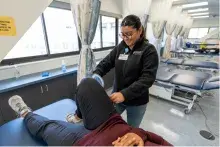
“Sometimes we might use a medicine ball or other equipment in the clinic that isn’t something they can continue using at home.” In this case, she tells me, “I was able to see which wall he could do an arm climb up and down.”
“One of the best things about this school is that they emphasize holistic care,” says student and athlete Issy Chu, DPT ’25, whose experience tearing her ACL while playing volleyball helped inspire her to go into this field.
“This was so different from a group project, getting to work with a real live human being with real symptoms.”
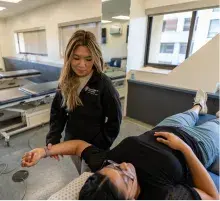
“What I enjoy seeing the most is a student’s instant realization in the importance of weaving in clinical practice in our program and how it varies from the offerings of a lecture and laboratory experience,” says Dr. Reyna.
In addition to grades, students received direct feedback from their participants. “I had lots of anxiety about messing up,” says Rubio. “You are putting your knowledge to the test, and you want to make sure you provide the best care you can. So it’s truly a confidence booster to hear the participant give you positive feedback, whether through their voice or through what you observe.”
One such participant who very much appreciated the entire experience is Ann Channin, 86, who experiences balance issues. “It’s a struggle to be an old person this day and age, but there are also some perks,” she remarks.
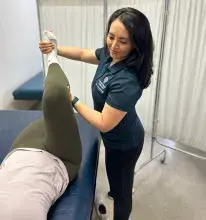
For Channin, it wasn’t just the balance techniques she learned, but the emotional and social components that enriched her life, too. “I didn’t like going to see a physical therapist as much as this situation where there were young people around me and they were interested in me, asking me questions. That was fun for me.” And, she adds, “I do feel a little stronger now.”
